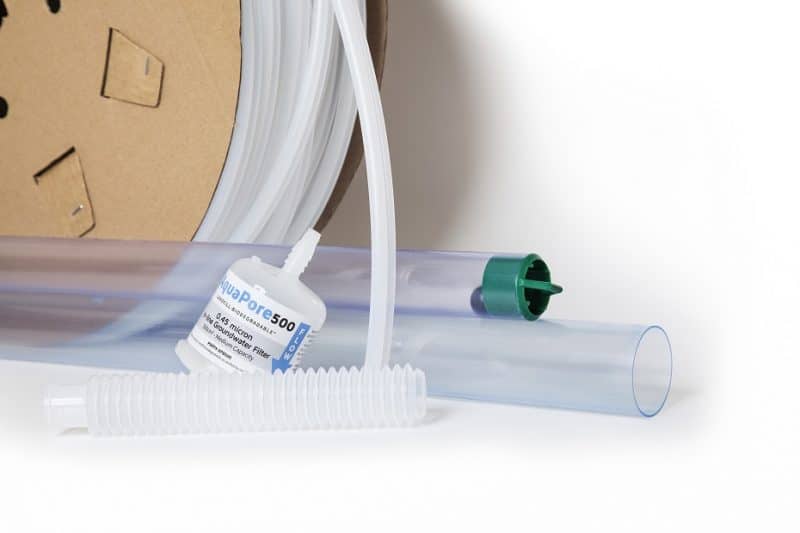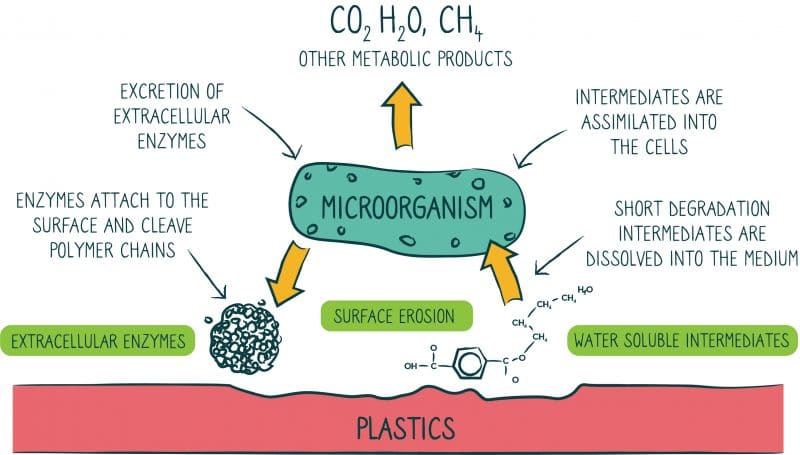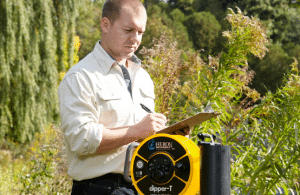Landfill-Biodegradable
Everyday Plastic
When it comes to biodegradable plastics, the three main choices are:
- Landfill-Biodegradable (which is our choice)
- Compostable (home and commercial)
- Oxo-Degradable (often just called ‘degradable’)

The Logical Solution
Landfill-biodegradable plastic products:
- Are affordable and a practical solution.
- Can be either reusable or recyclable.
- Biodegrades 90+% faster than conventional plastics, biodegrading under typical landfill environmental conditions much faster than traditional plastics which take hundreds of years to biodegrade.
- The methane produced from accelerated landfill-biodegradable plastics can be captured within the time frame the landfill is actively managed, rather than being released into the atmosphere over hundreds of years after the landfill has closed and stopped being managed. This captured methane can be used for fuel and energy production.
- Biodegradation of plastic is achieved by enabling microorganisms to metabolize (i.e. break down) the molecular structure of the plastic, which produces a humus-like material (organic matter) which is a natural plant fertiliser and a biogas.
- Do not fragment into microplastics.
Landfill-biodegradable technology.
Landfill-biodegradable products are made by combining traditional plastic with an organic additive. The biodegradation only begins when the plastic is exposed to a microbe-rich environment, such as a landfill. The additive attracts microbes to the plastic and they start to digest it. As they do this, the enzymes (the microbes secrete) break the carbon bonds in the plastic molecule allowing the microbes to digest them for their energy. As more enzymes are secreted, more atoms are removed from the plastic molecule (called depolymerisation) which the microbes can digest. As this process continues, the plastic molecule is broken down and digested away.
The biodegradability of plastic can be confirmed by comparing biodegradation results from an independent laboratory using either ASTM D5511, ASTM D5526 or Bio-Methane Potential (BMP) tests.
The diagram below illustrates the additive and the landfill-biodegradable process.

From Mueller, R.J., Biodegradability of polymers: Regulations and methods for testing, in Biopolymers, Steinbuchel, A., Ed., vol. 10., Wiley-VCH, Weinheim, Germany, 2003.)
FAQ
- An organic food source.
- Approved by USFDA for food contact.
- Mixed in a small ratio to not affect the parent plastic material properties.
- Landfill conditions are different across the country. Some are in cooler or warmer conditions. If the plastic is put into a dry landfill it will degrade slower than a more actively managed water moistened landfill.
- The difference in plastic thickness. Our landfill-biodegradable plastics vary in thickness. The thicker the plastic section, the longer it will take to biodegrade. Membrane films are expected to biodegrade quickly. Thicker sections may take several years.
Compare the plastic technologies
| Plastic Property | Landfill-Biodegradable | Home Compostable | Compostable | Oxo-Degradable |
|---|---|---|---|---|
| Biodegradable in landfills? | Yes | Yes | No | No |
| Recyclable with other mainstream plastics? | Yes | No | No | No |
| Special storage conditions required? | No | Yes | Yes | Yes |
| Shelf life / has expiration dates? | No | Yes | Yes | Yes |
| Will degrade over a few months when exposed to sunlight | No | Marginally | Marginally | Yes |
| Fragments into small pieces in ambient air | No | No | No | Yes |
| Biodegradation begins at time of disposal; not before | Yes | Yes | Yes, in Commercial compost facility only |
No |
| Will biodegrade in commercial and home composts | No | Yes | No, Commercial compost facility only |
No |
| Needs oxygen in order to biodegrade | No | No | Yes | Yes |

“I believe FieldTech Solutions’ initiative will make a big difference in the industry. The irony of contributing to the pollution problem with single-use disposable sampling equipment in order to clean up the planet has bothered me for many years. The availability of these biodegradable products is a big step towards reducing the problem.”
“Just wanted to let you know the materials have arrived on site already and have been perfect to collect the tricky samples. Thanks again for brainstorming the best options and going out of your way to finding a small courier service, really appreciate it.”



